If you want to stay busy on your next angling excursion, you may want to consider Bass fishing in Minnesota. The Mississippi River system is a native waterway for both Largemouth and Smallmouth Bass, and they’ve been introduced pretty much everywhere else in the state. Between the Mississippi and the state’s 11,842 lakes, Minnesota provides plenty of access to your favorite species!

Clear watersheds and ideal underwater structure allow fish to thrive here, keeping you busy with hard-hitting strikes throughout the season. The state manages its Bass populations through catch-and-release regulations and by eliminating fishing pressure during part of the spawn. Bass species here get into the 2–4 pound range in just a few seasons, making it easier to replenish fight-worthy fish.
Out-of-state anglers often mistake the state’s location for cold waters inhospitable to warm-water Bass. But don’t be fooled. Bass fishing in Minnesota is not just productive, but lots of fun. The following information will help trigger strikes and swing a few lunkers into your boat in the “Land of 10,000 Lakes!”
Types of Bass in Minnesota
For most anglers, Bass fishing throughout Minnesota means targeting one or more of the three most common Bass species. But a less common fourth species infrequently appears in the state’s southern Mississippi River waters, too. Each species of Bass will offer a different experience once you hook them. Let’s learn more.
Largemouth Bass
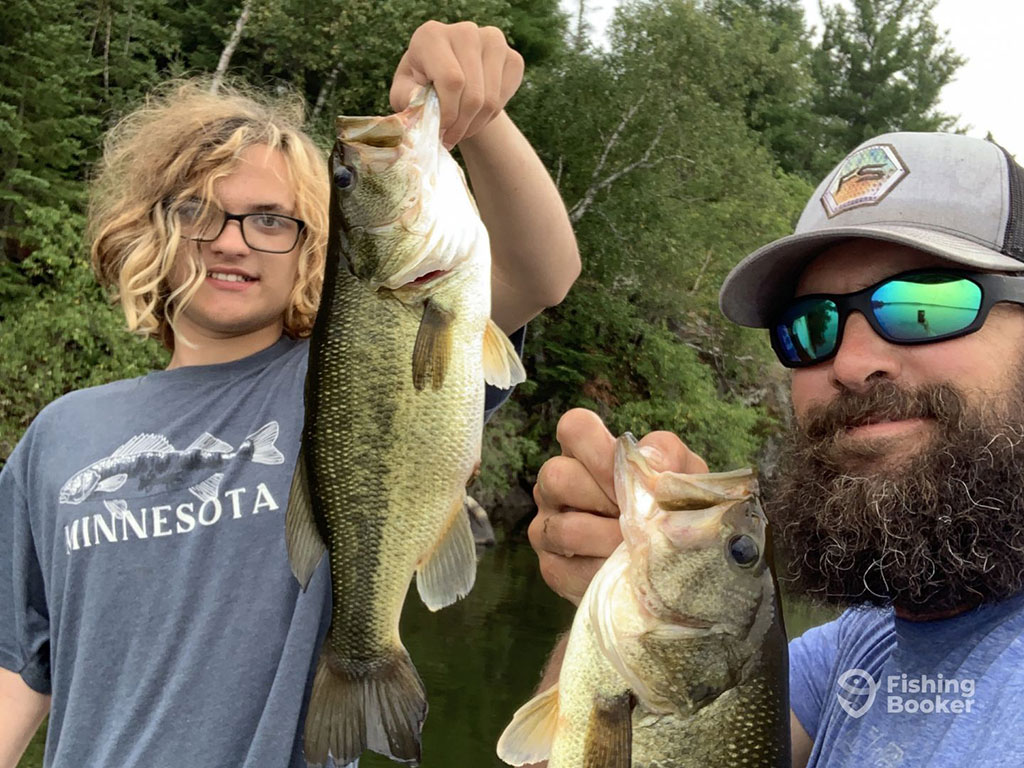
These are an abundantly-distributed species in Minnesota’s major drainage systems. They thrive in lakes and the backwaters of rivers with adequate vegetation. Hard-hitting specimens nearly a foot long and weighing 2–4 pounds are routine, with plenty of 5-pounders mixed among them. The state record is an 8 lb, 15 oz specimen caught in Auburn Lake in 2005.
“Hard-hitting” is a common description when discussing the feel of a Largemouth Bass. When initially reeling in a Largemouth, it may feel as though the Bass is trying to pull your rod into the water. They also breach the water with dramatic jumps, and you’ll enjoy up to 30 seconds of hard fighting. Largemouths tend to settle down after that, leaving you feeling dead weight as you reel them in.
Smallmouth Bass
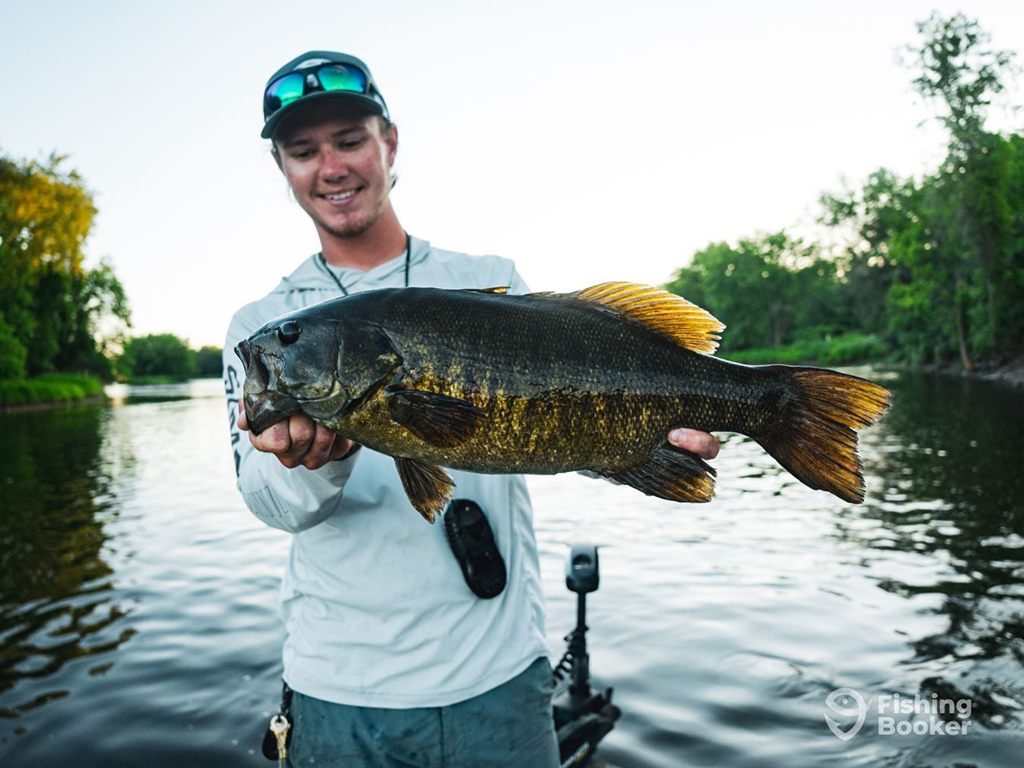
These fish are native to the Mississippi River system but are transplants throughout the state. You’ll find them in colder lakes that still support warm water species, and they thrive in rivers or streams with fast currents. Minnesota’s state record for Smallmouth is an 8 lb bruiser caught in 1948 at West Battle Lake.
Pound-for-pound, Smallmouth Bass are among the hardest-fighting freshwater fish you will hook. They tend to be more aggressive than Largemouths, so there’s the potential for more hits when fishing for them.
You’ll also find That these fish will fight you from the strike – all the way to the boat or shoreline. It feels like you’re fighting a Bass twice its actual size, making even the smaller specimens fun to catch!
White Bass
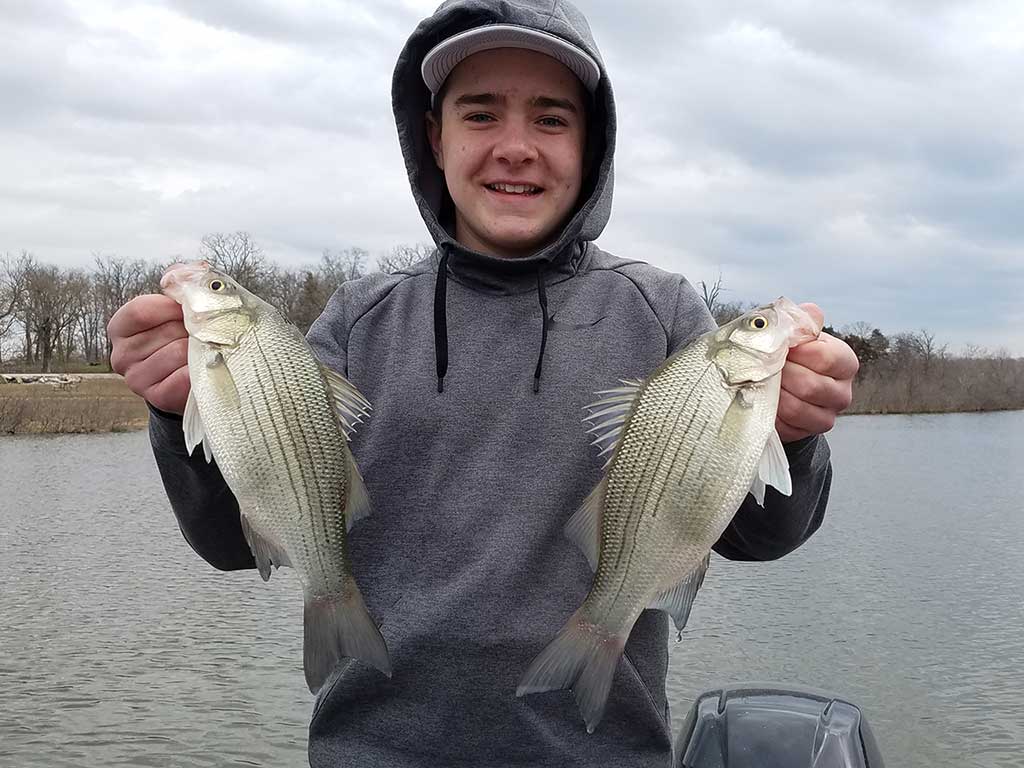
This species thrives in Minnesota’s southern lakes, the Minnesota River, and portions of the Mississippi and St. Croix Rivers and their tributaries or reservoirs. They mature quickly but tend to have shorter lifespans than other Bass species. In 2016, a 4 lb, 8 oz fish measuring 20 inches was pulled from Vadanis Lake, setting the state record for White Bass.
This species is more aggressive than Largemouth and puts up a fight that’s similar to Smallmouth. They lack the Smallmouth’s tail-to-body ratio and muscle development, however, meaning their fights won’t last as long. White Bass also jump out of the water less than Largemouth and Smallmouth, but they still promise plenty of fun!
Yellow Bass
Your only chance to reel in an elusive Yellow Bass is to fish the Mississippi River between Pool 8 and Lake Pepin. The species has a limited range due to dams preventing its northern migration. No published state records are available for Yellow Bass, likely due to the rarity of landing one outside the southern Mississippi River.
They are known for being aggressive, and they’ll attack baits and lures with abandon. Yellow Bass are smaller than other Bass in the state, so you won’t get the same fight out of one you hook. This translates to a decent strike but only a moderate fight compared to Smallmouth or White Bass. However, catching something this rare is always a treat!
Best Times for Bass Fishing in Minnesota
Don’t plan on Bass fishing in Minnesota from near the end of February through mid-May, as this is outside the open season. The Minnesota DNR creates this window to help maintain Bass populations throughout the state by relieving fishing pressure.
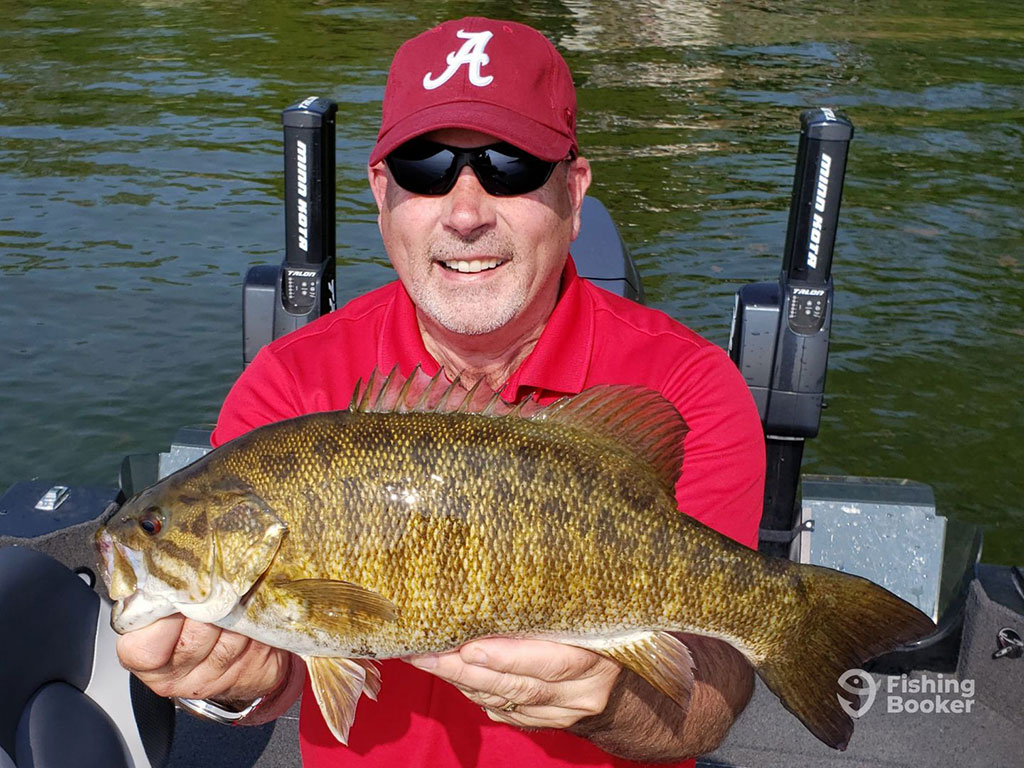
You can find success catching Bass throughout the open season, but fishing is best from May through September annually. The spring spawning season and fall feeding period before winter are peak times within that window.
Why? Well, it all comes down to water temperature.
During spring, water temperatures rise, indicating it’s time to spawn. Bass move into shallow waters and begin feeding on bait fish and other prey to fuel themselves after winter. You’ll find them eating aggressively and they’ll generally be easy to access before the summer heat pushes them into deeper water.
Water temperatures start cooling in early fall, and Bass follow bait fish back into the shallows to bulk up for winter. Fall temperatures dip sooner in Minnesota, making Bass move deeper sooner than in other parts of the country. Lakes begin icing earlier at this latitude, with ice fishing starting as early as November.
Now that you understand Minnesota’s Bass fishing seasons, you might wonder what times of day are best. Most anglers find the times around sunrise and sunset the most productive. The low light during these times offers great ambush opportunities while still allowing for visual tracking. Water temperatures are also milder, encouraging more activity.

Nighttime fishing is your next best option. Bass still feed at night, and you’ll get reactionary strikes with properly-presented lures. The fish’s eyesight plays less of a role, meaning you’ll have to attract Bass with sound and vibrations in the dark.
This leaves daytime fishing, which is often the least productive, especially in high heat. Suspended Bass in deeper water or hiding in sheltered ambush are still accessible, however. It just requires a little more experimentation.
Top Techniques for Minnesota Bass Fishing
If you’re an experienced Bass angler, the techniques you’ve already developed will serve you well in Minnesota’s lakes, reservoirs, rivers, and streams. Those new to angling or Bass fishing in Minnesota will want to focus on particular gear and techniques, however.
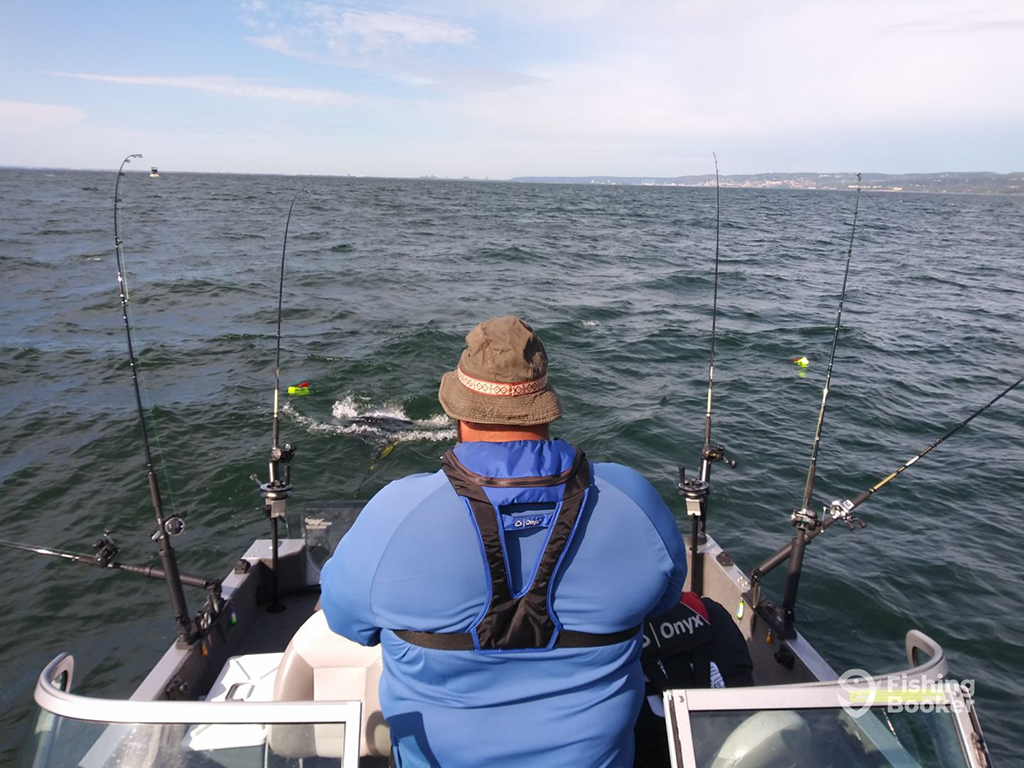
For rods, don’t go below medium-action setups. They work well in most situations and offer enough strength to set your hook. You might go with medium-heavy if you target Largemouth Bass, as they allow for a good set.
If you’re a beginner, it’s best to use a spinner reel as they’re simply easier to learn on. When you can, learning to control a baitcaster will provide you with pinpoint operation from cast through retrieve.
Bait and lure selection play a major role in attracting Bass. Dressed-up jigs and plastics offer lots of visual presentation which Bass hunt by eyesight during the day. Spoons and spinners can add vibration to the mix, generating reactionary strikes in low-visibility situations.
Plugs are worth mentioning as they combine visibility and sound with a surface element that prevents most snags. Live baits and artificials that mimic natural food sources complete your tackle options and offer consistent strike opportunities.

When it comes to techniques, you need to place your bait near the location where the fish sit. Bass are typically a great predatory ambusher, so you must find the underwater structure where they hide. Prime spots include submerged logs, rocks, the edges of weed beds, below floating vegetation, and along changes in substrate.
Multiple casts at various depths will tell you the fish’s location in the water column, so change up lure depths often. When you feel a strike, you need to wait until you feel the weight of the fish before setting the hook. Otherwise, you’re more likely to yank the bait right out of its mouth!
Maintain tension because slack in the line is your enemy. You can let a Largemouth run line to tire it out, but be aware that a Smallmouth will fight you until the end. White and Yellow Bass tend to fall in between this regarding their fight.
Prime Bass Fishing Spots in Minnesota
The Mississippi River is hands down the best body of water for Bass fishing in Minnesota. It offers 681 miles of water that cut through various terrains, making it a visually diverse location. You can fish from shore or watercraft, and dozens of public launching points are available.

Lake Pepin is the largest lake on the Mississippi River, covering 30,000 surface acres and a chance to catch all four Bass species.
Lake Minnetonka hosts more Bass fishing tournaments than any other lake in the state. It stands out because it has several basins covering over 14,000 surface acres. The place stays busy but has a reputation for a high-quality Largemouth Bass population. Its location within the Twin Cities metro area allows for nearby amenities.

Lake Millie Lacs is the second-largest inland lake in the state, and the shallow clear waters make it a great Smallmouth Bass fishery. Bassmaster magazine has previously listed it as the nation’s best. You’ll find plenty of rocky shorelines here, and places like Father Hennepin State Park offer boat and bank access along the lake’s southeast corner. The park also makes an ideal camping location for a mini-fishing vacation.
Southern waterways like Big Stone Lake along the Minnesota and South Dakota border generate good White Bass fishing. It stands out for bank fishing, with over 10 miles of public shoreline and docks you can access. It’s only 16 feet at its deepest, so you can reach the fish without going too deep. Big Stone Lake State Park is a great place to set up shop on the Minnesota side of this waterway.
Minnesota Bass Fishing Regulations
Before casting your favorite spinner bait out on the water, you must have the proper license for Bass fishing in the state of Minnesota.
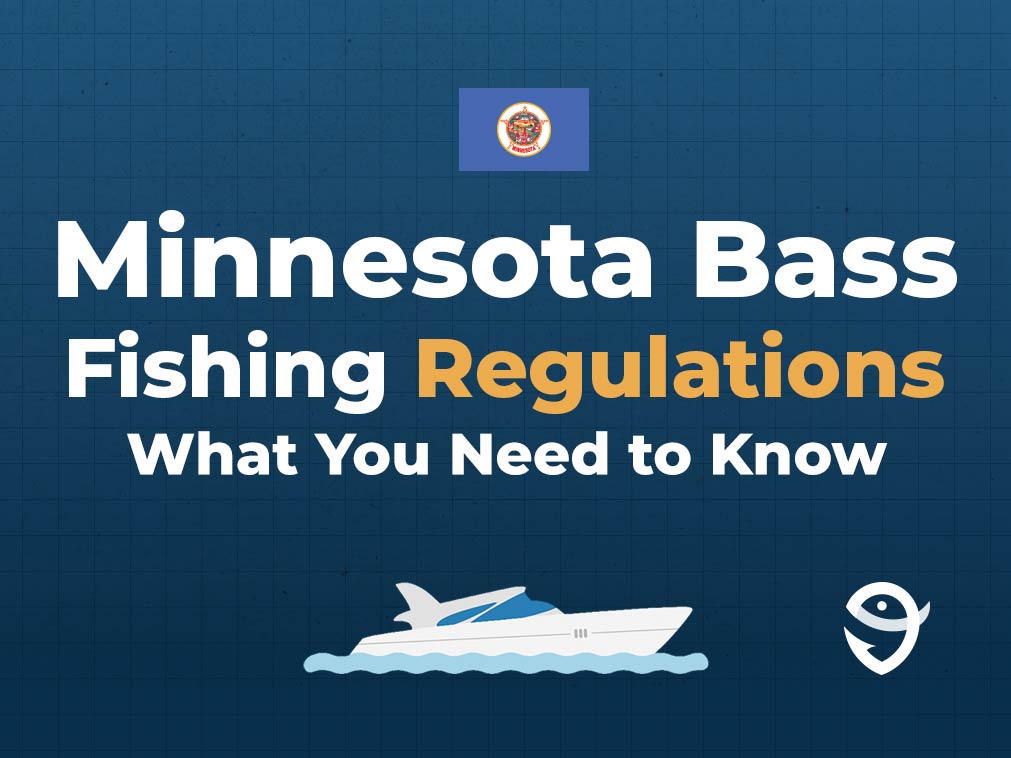
Both residents and non-residents aged 16 and older must have a valid license Annual licenses are good from March 1 through the last day of February the year after. You can purchase daily or multiple coverage from the Minnesota DNR or vendors.
Many anglers bring their own watercraft to use as a fishing platform. The Minnesota DNR has established various regulations you must follow to operate your watercraft in the state’s waterways.
And finally, the Bass season in Minnesota runs from sometime in May through late February each year. The Northeast zone (east of US Route 53 between Duluth and International Falls) has a mixed-species possession limit of six. Largemouth in the rest of the state have similar limits except for catch-and-release obligations during May. Smallmouth outside the Northeast zone is catch-and-release except between late May and early September when the six mixed-species limit applies.
Minnesota Bass Fishing FAQs
Bass Fishing in Minnesota: A Mixed Bag of Treats
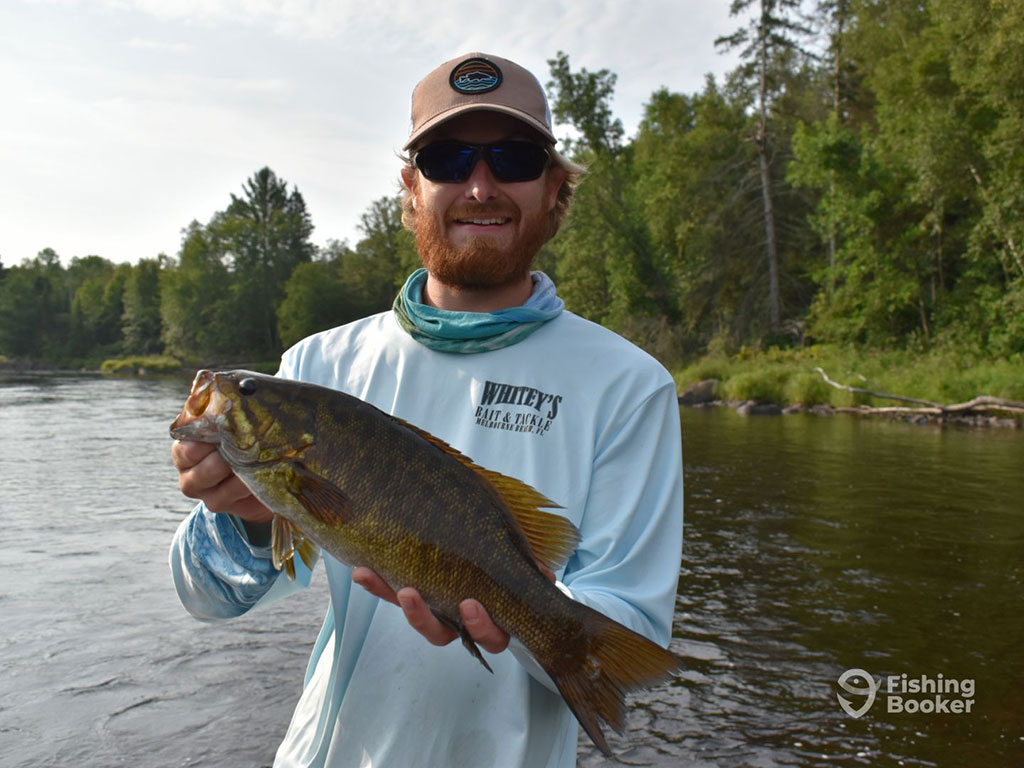
And now you’re ready to try it out for yourself! Bass fishing in Minnesota, as you can see, is a whole world of possibilities. Bring your own vessel, pair up with a local guide, or head out and cast from shore on one of the state’s numerous bodies of water. The Land of 10,000 Lakes is calling!
Have you ever been Bass fishing in Minnesota? Which species did you land? We’d love to hear from you in the comments below!
The post Bass Fishing in Minnesota: An Angler’s Guide appeared first on FishingBooker Blog.
https://ift.tt/OX3tCQF
0 Comments
Enregistrer un commentaire